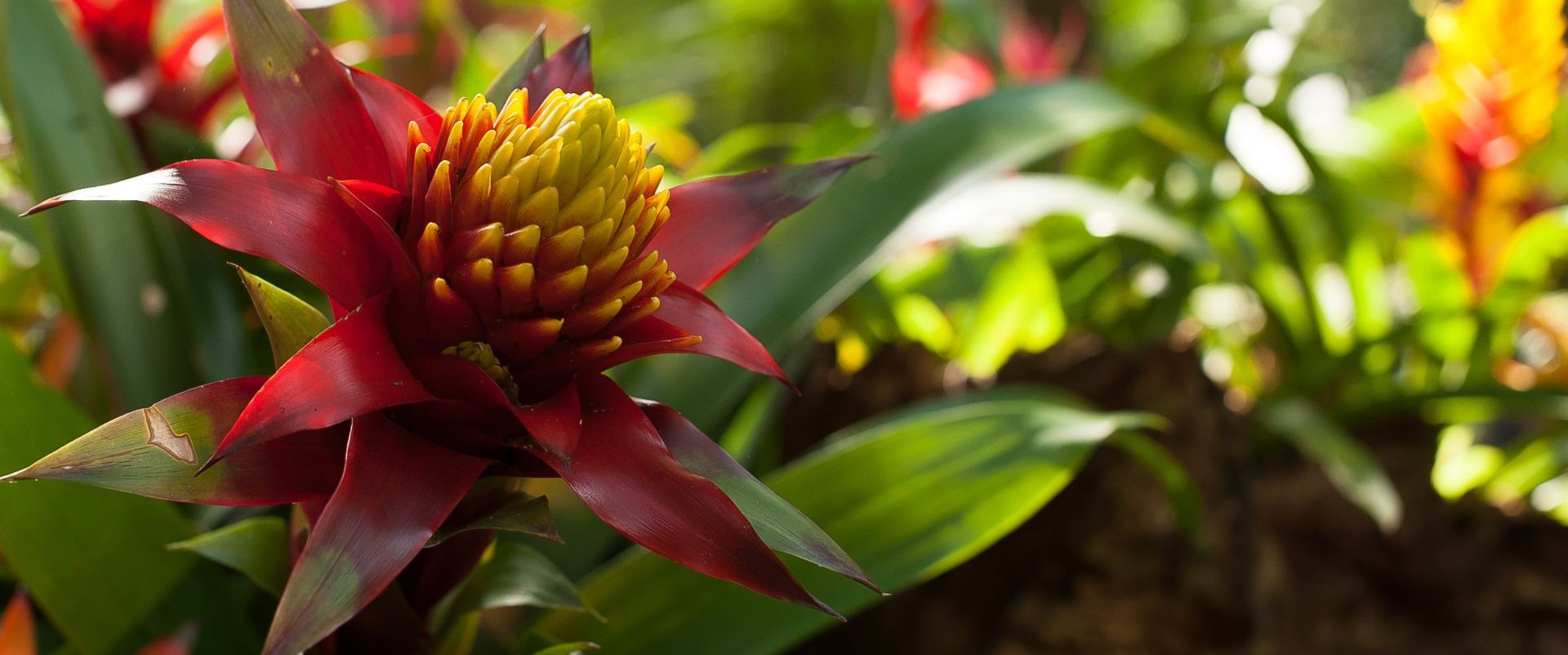
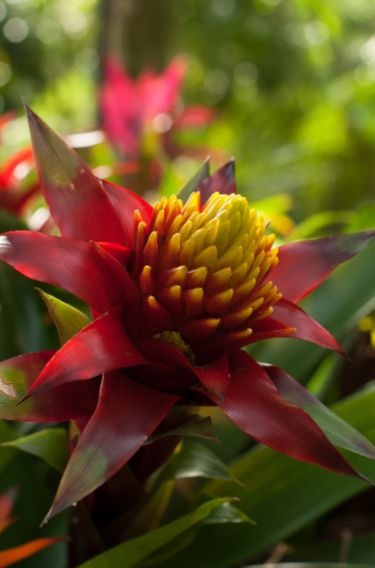

THE ECOLOGICAL FUNCTION OF BROMELIADS
Bromeliads are plants from the family Bromeliaceae, and they draw attention because of the beauty of their forms, colors, and inflorescences. They are found in tropical countries and in Brazil alone there are 2,500 species, of which more than 74% only exist in the Atlantic Rainforest! Amazing, isn’t it?
A single bromeliad is a micro-habitat for insects, amphibians, and small birds. The bromeliads have important interactions with other living beings, allowing many animals to find shelter within its leaves, nourish themselves from its interior, drink from its water, mate inside them, and even lay their eggs in the small “pools” of water that they hold.
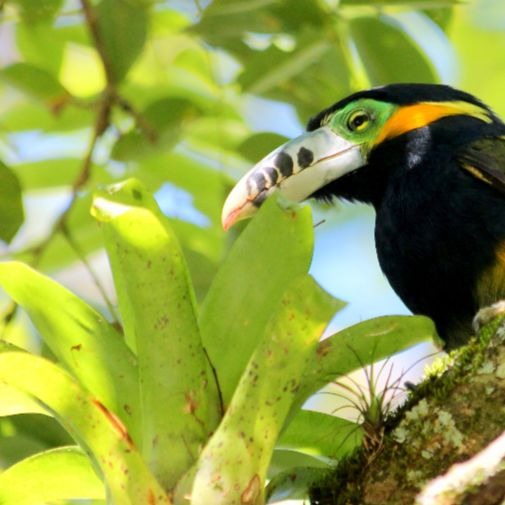

Bromeliads are plants from the family Bromeliaceae, and they draw attention because of the beauty of their forms, colors, and inflorescences. They are found in tropical countries and in Brazil alone there are 2,500 species, of which more than 74% only exist in the Atlantic Rainforest! Amazing, isn’t it?
A single bromeliad is a micro-habitat for insects, amphibians, and small birds. The bromeliads have important interactions with other living beings, allowing many animals to find shelter within its leaves, nourish themselves from its interior, drink from its water, mate inside them, and even lay their eggs in the small “pools” of water that they hold.
In general, these plants have long, curved leaves distributed in a rosette shape. Due to this arrangement, the bromeliad has the ability to store water and nutrients, becoming the perfect environment for the development of some insects, microorganisms, and for the reproduction of amphibians. This is the case with the Alcatraz snouted treefrog (Scinax alcatraz), a species native to the Alcatraz Island along the coast of São Paulo: this treefrog reproduces exclusively inside bromeliads!
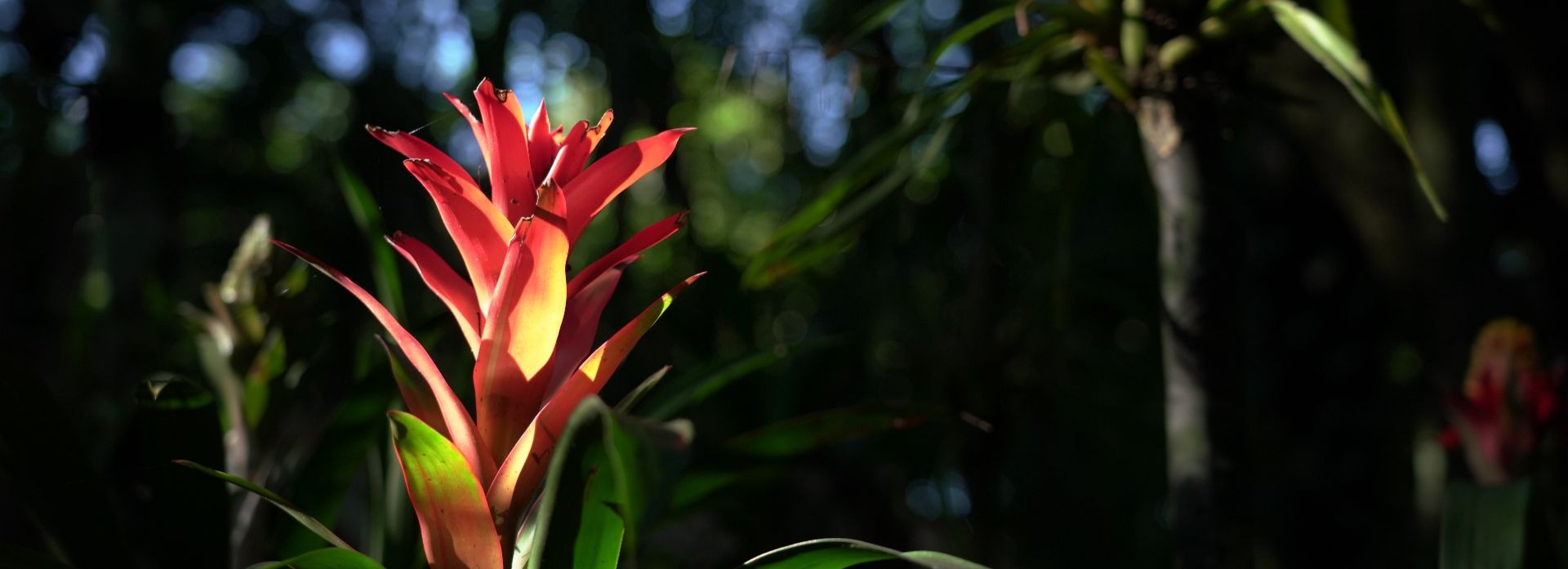
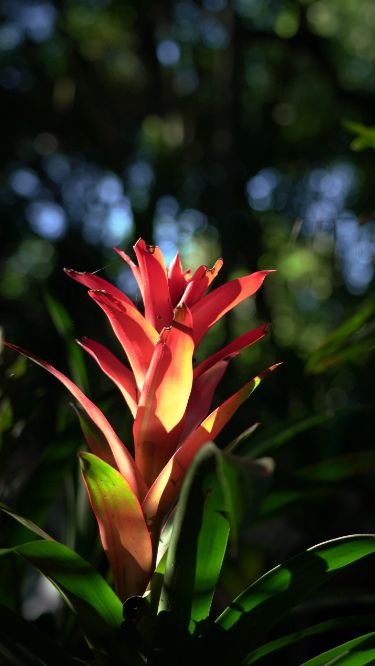
The pollination of bromeliads is mainly performed by hummingbirds and bats who are attracted by the strong scent of its flowers that open during the night.
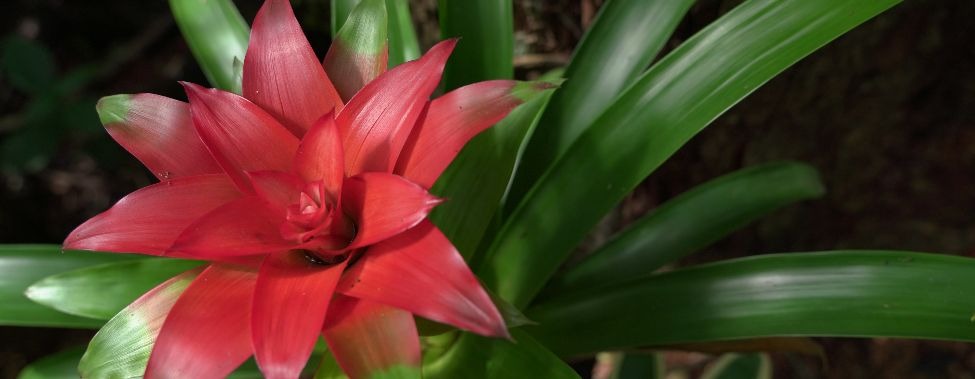
 Every day from 8:30am to 5:30pm
Every day from 8:30am to 5:30pm Prices
Prices


